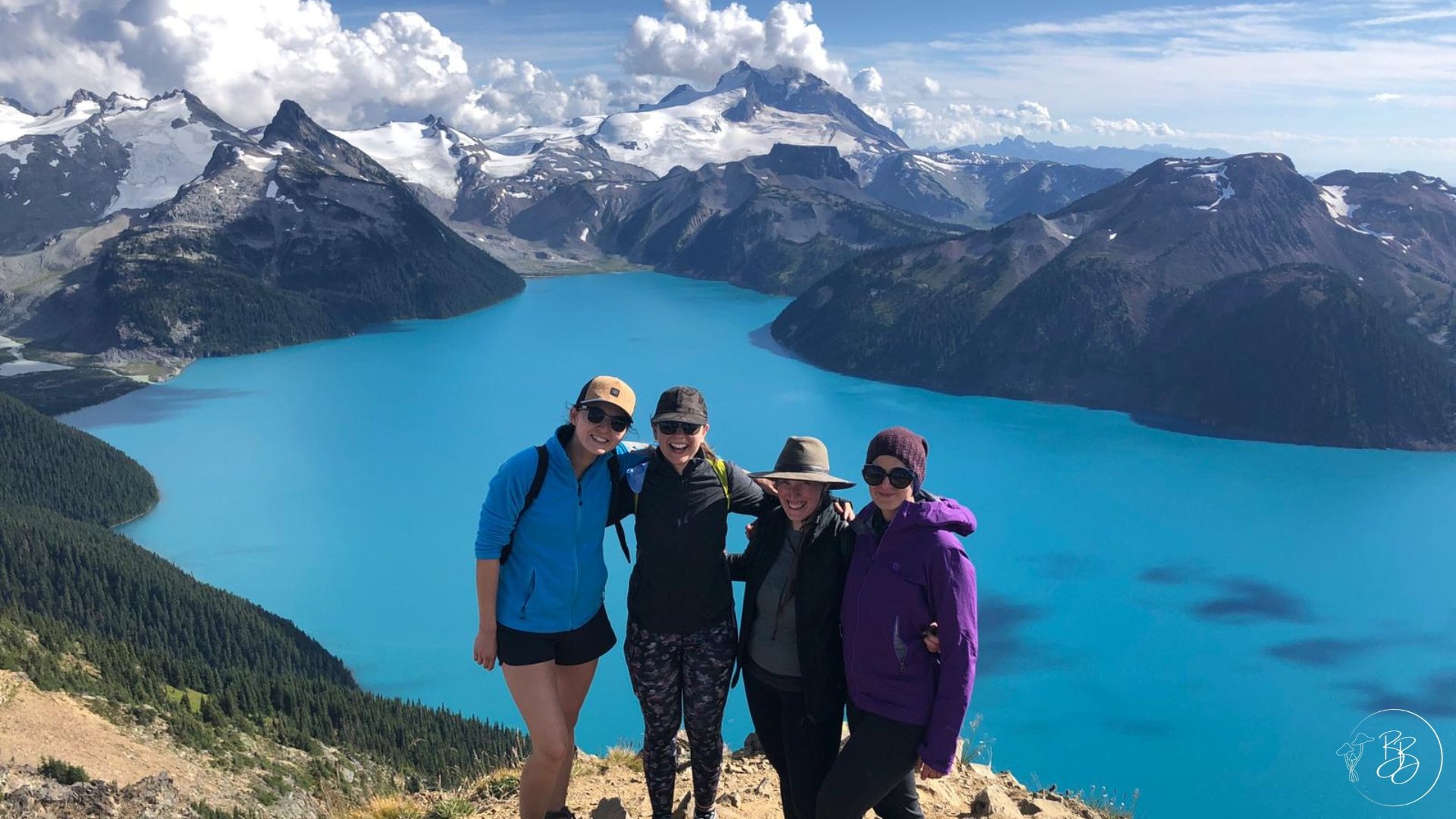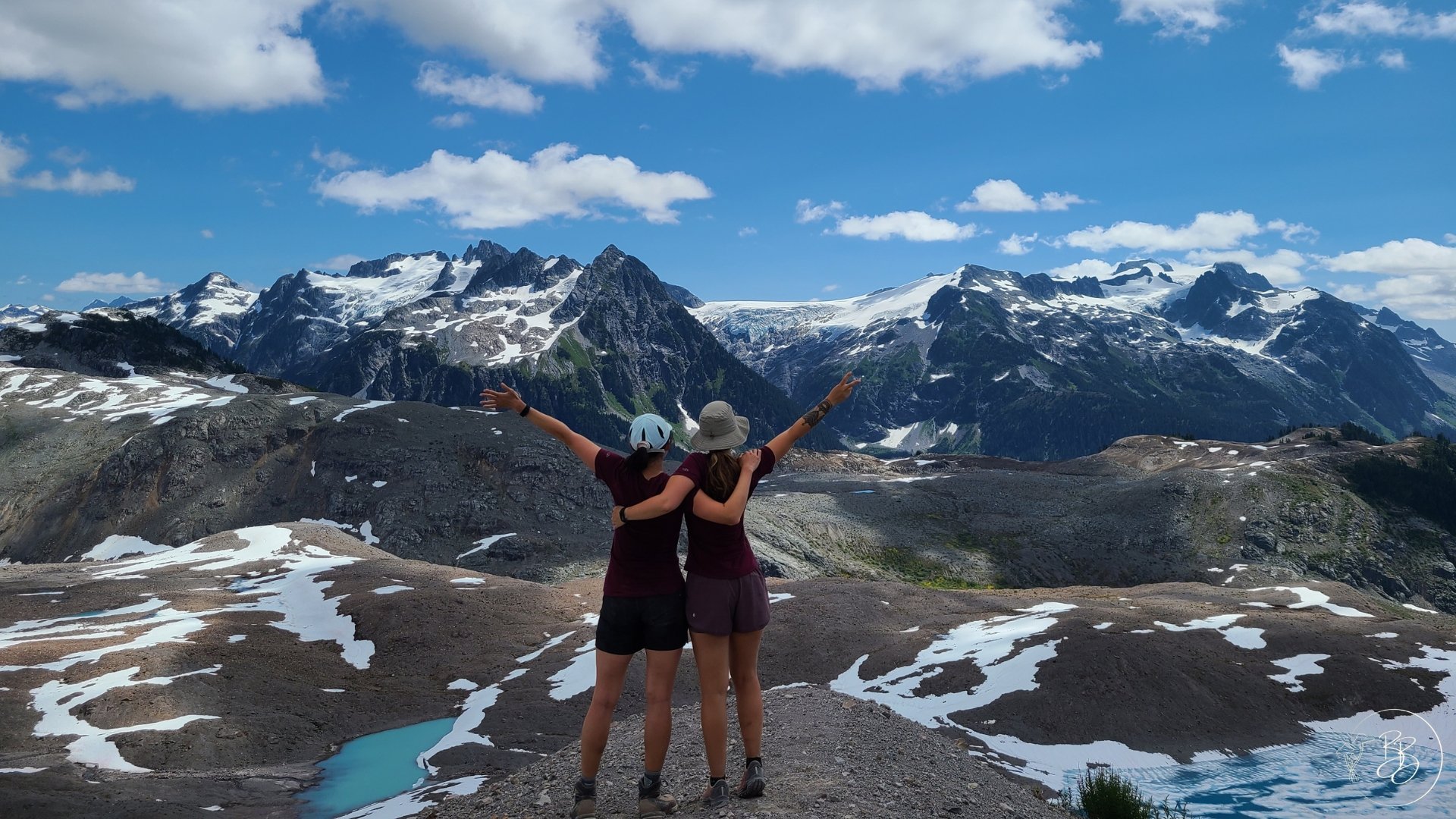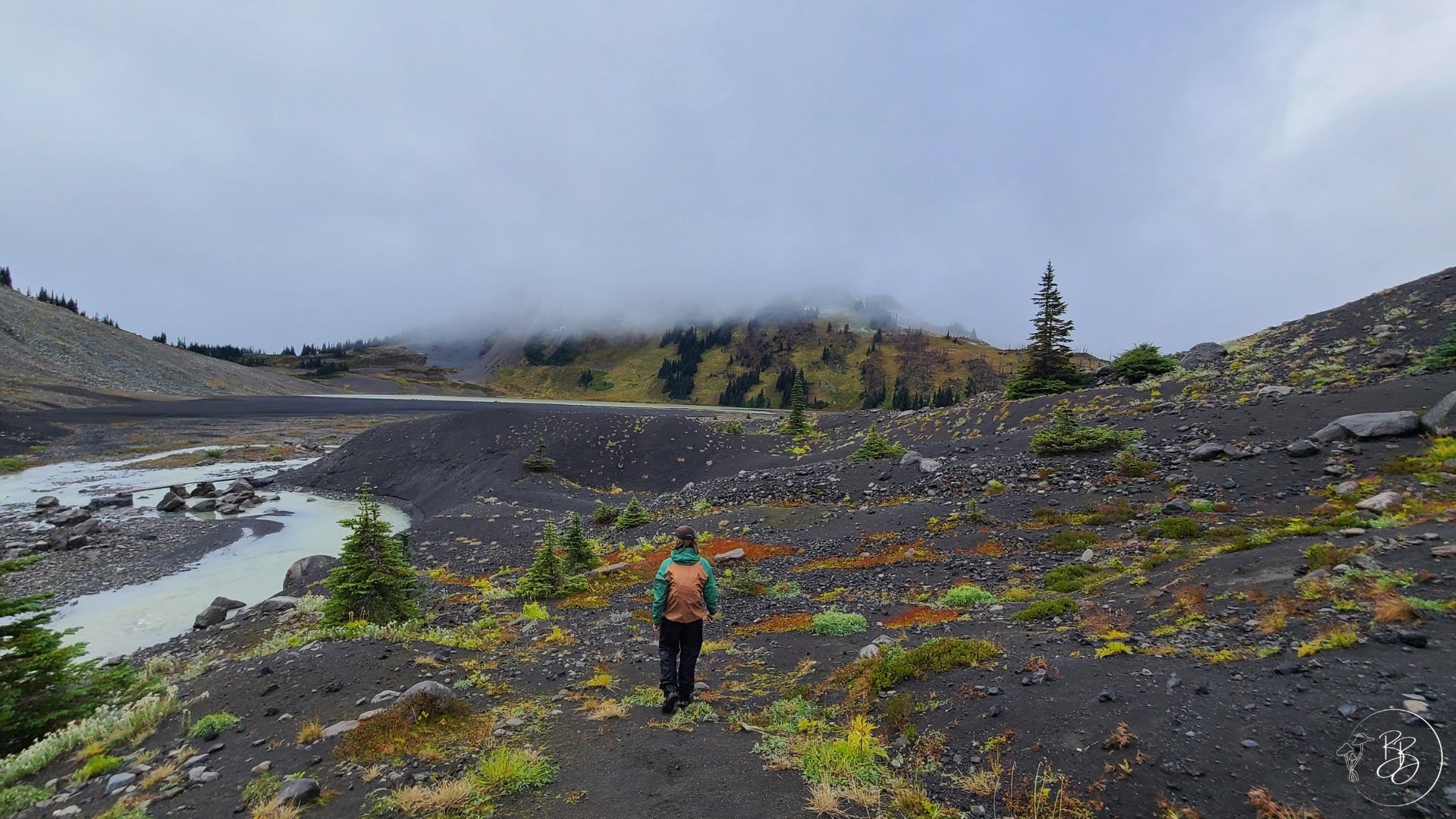Howe Sound Biosphere Region
Known as Átl’ḵa7tsem in the Squamish Language - traditional territory of the Squamish Nation.

Scattered with islands, this large Canadian Fjord carved by glaciers is home to ancient glass-sponge reefs, both coastal and mountainous terrain, and is home to the iconic granite monolith known as ‘The Stawamus Chief’.
Statistics
Country: Canada
Province: British Columbia
Established: 2021
Geographical Features: Fjord Landscape, Coastal Temperate Rainforest, Rugged Mountain Ranges, Islands and Archipelagos
Best Ways to Explore: Hiking, Backpacking, Mountain Biking, Kayaking, Stand-up Paddleboard, Sailing, Kitesurfing, Rock Climbing, Scuba Diving
Best Time to Visit: May - September
Closest City: Vancouver
Follow the Howe Sound Biosphere on all the below social links!
Watch this short clip on the Howe Sound Biosphere
A map of the Howe Sound Biosphere
“Perched on the edge of Vancouver, Canada, this majestic fjord is teeming with biodiversity from mountain top to ocean bed. Once devastated by industrialization, the region has undergone a dramatic, but fragile ecological turn-around.”
Biodiversity Conservation
Rockfish Monitoring in Ancient Glass Sponge Reefs
The glass sponge reefs are truly what makes the Howe Sound Biosphere Region unique and significant on a global scale. Glass sponge reefs pre-date the dinosaurs, potentially by hundreds of millions of years, and are only present on the West Coast of North America! They were initially thought to be extinct but were discovered living in the region in 1987, sparking a resurgence in conservation efforts.
These fragile reefs serve as critical habitat for many fish species, making their protection essential. Marine refuges have been put in place to protect the reefs from bottom contact fishing and non-profits have been working on projects to make improvements to Rockfish Conservation Areas. Many rockfish species in the region are considered to be threatened or a species of special concern and are highly vulnerable to overfishing due to their slowness in reaching reproductive age.
Watch this short YouTube video by Ocean Wise on the Glass Sponge Reefs
The Howe Sound Biosphere Region Initiative Society has partnered with Marine Life Sanctuaries Society and the Marine Stewardship Initiative on this project to monitor rockfish in the sound with the potential to increase protection of these marine environments.
Read more about this project on the Howe Sound Biosphere Region’s website.
Regenerative Tourism
Contribute to Citizen Science
with iNaturalist
Get involved in citizen science and explore nature in a whole new way with iNaturalist! The app lets you record and share your observations of plants, animals, and fungi, contributing to global biodiversity research. Every photo you upload helps scientists track species and monitor ecosystems. It's a fun, interactive way to volunteer for conservation efforts while discovering the natural world around you.
Some of the species we’ve seen in the Howe Sound Biosphere include: White Pasqueflower, Ghost Pipe, Twinberry Honeysuckle, Nootka Rose and Salmonberries
Follow Biosphere Bathing on iNaturalist to get live updates on species we see in Biosphere Regions across Canada.
Documenting fungi at Cheakamus Lake
Monitor Western Toads in Alice Lake Provincial Park
with Squamish Environment Society
Heading out for a hike in Alice Lake Provincial Park? Why not survey Western Toads while you’re there!
Western Toads are federally listed as a species of special concern due to declining numbers. Vulnerable during tadpole and "toadlet" stages, Western Toad populations face threats from human and dog activities near shorelines and trails.
“We hope that by better understanding how, where and when the breeding cycle occurs, that human impacts can be mitigated.”, Squamish Environment Society.
Volunteers will conduct surveys by foot and by kayak in and around the trails at Alice Lake Provincial Park. Alice Lake Provincial Park is a stunning area for hiking and kayaking within the Biosphere boundaries, with four freshwater lakes surrounded by dense temperate rainforest.
Photo of a Western Toad by Kyle Kulas for SES
This is a joint project between Squamish Environment Society (SES) and BC Parks. Learn more about this project on the SES website.
Forage Fish Sampling on the Sunshine Coast
with the Sunshine Coast Conservation Association (SCCA)
Volunteering for forage fish sampling is a hands-on way to support marine conservation on the Sunshine Coast in the Howe Sound Biosphere. This project focuses on monitoring the spawning habitats of forage fish like surf smelt and Pacific sand lance—key species that sustain the local food web, from seabirds to larger fish like salmon.
Volunteers will help collect and process beach sediment samples to identify potential spawning sites. Training and equipment are provided, making it an accessible opportunity for anyone passionate about protecting coastal ecosystems. Your efforts will directly contribute to vital data that informs habitat protection and sustainable management practices.
Photo Credit: Will Duguid
By joining the sampling team, you’ll not only connect with like-minded conservationists but also play a crucial role in safeguarding the foundation of our marine ecosystems. This rewarding experience combines community science with meaningful action for the coast you love.
For more information and to sign up, email diannesanford@gmail.com. Please indicate which day and location you are available.
“Anyone from the community can go out and join these groups and learn how to bird”
Learn how to Bird in Squamish
with Squamish Environment Society
The Squamish River Area is identified as an Important Bird Area (IBA) - “places of international significance for the conservation of birds and biodiversity”, IBA Canada.
Over 235 bird species use this area for nesting sites, feeding, resting during migration, and year-round homes. SES conduct monthly bird counts in the estuary in order to track bird populations. These community-initiated counts began in 1991 and have resulted in one of the most detailed compilations in the province. The data is also used to inform land-use planning processes, and promote habitat protection.
“Visit the Estuary’s hidden places, through all seasons, tides, and weather. Learn to identify birds by sight and sound. No experience necessary!”, Squamish Environment Society.
Counts are usually every second Sunday of the month, you can find upcoming count dates on the Squamish Environment Society website.
Birding in the Howe Sound Biosphere
Upcoming Events and Volunteer Opportunities
Outdoor Recreation
Forest Bathe with a First Nations Guide
With Talaysay Tours
“Our cultural teachings that we carry forward from our Ancestors remind us the forest is medicine. As we walk among the talking trees, each step is filled with gratitude, respect and love.”, Talaysay Tours.
The Squamish Nation people have lived and cared for these lands since time immemorial. Take some time to immerse yourself in the forest with a local cultural guide. Connect with nature in a way you never have before and feel the forest transform and heal you.
Talaysay Tours offer these unique forest bathing experiences in Squamish and the Sunshine Coast within the Átl’ḵa7tsem / Howe Sound Biosphere Region. Tours can be booked through the Talaysay Tours website.
Átl’ḵa7tsem (pronounced At-Kat-Sum) is the Squamish Nation name for ‘paddling into the inlet’.
Photo credit: Amber Turnau of Substrate Studios
“Loosely translated, [Squamish] means ‘Mother of the Wind’ and ‘people of the sacred water [in the Squamish Language]”
Explore the Marine Network in the Sound
Being on the water offers a fresh perspective of the sound, with cascading mountain ranges surrounding you and rising dramatically from the water ahead. Take a moment to ground yourself in the present as you soak in the beauty of your surroundings.
With such a vast area to cover, the Howe Sound gives many options for exploring it’s waterways, from cruisy dap trips to week-long expeditions, there’s enough to keep all types of explorers satisfied. BC Marine Trails have a great online interactive map that shows campgrounds in the area so you can plot out your route.
This area is well known for its high winds which makes it perfect for kite-surfing and sailing, but can make it difficult for paddling if you don’t do your research first. If not going with a tour, be sure to chat with the local guides about the best times to paddle and safest direction to go.
Go Kayaking with Bowen Island Sea Kayaking
Paddle with Coastal Stoke SUP
Sail out of Squamish with Canadian Coastal Sailing
Learn to Kiteboard with Aerial Kiteboarding
Rock Climb the Stawamus Chief in Squamish
The Stawamus Chief on the right as seen from the Howe Sound
Keen to go rock-climbing on one of the most recognisable granite monoliths in the world?
Perhaps you’ve heard of the Stawamus Chief in rock-climbing circles, or you’ve simply seen it in the background of one of your favourite movies or television shows. Climbers are drawn to the Stawamus Chief for its challenging pitches, stunning views, and the overall experience of scaling this iconic landmark.
The Squamish Access Society (SAS) have long been advocating for access to climbing in and around Squamish and played a crucial role in securing the Smoke Bluffs Provincial Park (another world-class climbing location in Squamish) back in the 2000’s. As a volunteer-led non-profit organization, the SAS organizes and conducts trail maintenance in and around climbing areas. This important activity protects our natural environment by keeping climbers on well-constructed and maintained trails, rather than dispersed throughout the forest, which could potentially damage the sensitive undercarriage environment (the ground layer including soil, roots, and low vegetation).
This important activity protects our natural environment by keeping climbers on well-constructed and maintained trails, rather than dispersed throughout the forest, which could potentially damage the sensitive undercarriage environment (the ground layer including soil, roots, and low vegetation). If you plan to climb around the Squamish area, please consider becoming a member of the SAS, it’s the best way to support the incredible work they are doing. SAS regularly organises volunteer days for its members, by joining you will get access to a welcoming community of like-minded individuals and the opportunity to participate in the preservation and protection of this remarkable region. Check out the SAS website before you go to find out about seasonal closures when there are active peregrine falcon nests.
Backpacking in Garibaldi Provincial Park
Whether you are an experienced backpacker wanting a challenge or someone who’s never backpacked in their life – Garibaldi Provincial Park has something for you!
One of the most popular hikes in BC is up to Panorama Ridge and Garibaldi Lake. It’s a tough hike due to its length and elevation gain but overall, not a technical hike. At close to 30km and 1,600m elevation gain, we recommend completing this hike over multiple days and camping at some of the campgrounds in the park. This hike is one of the most crowded hikes in BC and unfortunately suffers from the effects of overtourism, we recommend hiking this during the week and please practice leave no trace principles.
If you’re wanting something more technical you can tack on a climb up to the Black Tusk, a distinctive dark spire formed by the remnants of volcanic eruptions, but be warned, the final ascent is an exposed scramble and requires the proper gear including a helmet for falling loose rock. Read more about this hike on the Best Hikes in BC site.
Another multi-day hike in Garibaldi Provincial Park is Elfin Lakes, a favourite of ours due to the variety of trails offered. Ideal for beginner backpackers, this trail features a hut by the lakes, so you can leave the tent at home. The hike itself is not challenging, a nice 11km with only 600m elevation gain (one way). For more of a challenge, you can hike on to Opal Cones, another remnant of ancient volcanic eruptions and surrounded by glacial terrain, one of the most stunning vista outlooks in BC.
Hiking in Garibaldi Provincial Park in the Summer requires day passes (booked 2 days in advance) or campground bookings (booked 4 months in advance), passes go quickly so make sure you plan ahead. Be sure to check the BC Parks website for any updates on required passes.

Garibaldi Lake as seen from Panorama Ridge

The Back Tusk

Opal Cones

Elfin Lakes Campground

Helm Creek
“British Columbia was voted the #1 diving destination in North America because of its biodiversity and vibrant life”
Scuba Dive to Ancient Glass Sponge Reefs
Want an experience you can’t get anywhere else in the world?
Scuba dive to prehistoric times, to before the dinosaurs roamed the earth, and experience the incredible marvel of the Glass Sponge Reefs. Located 130 feet below the surface of the water in Howe Sound, you can view these fragile reefs that provide important habitat for many fish species. These ancient reefs are among the rarest marine ecosystems on the planet. Found only on the West Coast of North America, they serve as underwater oases for countless marine creatures. Diving to the Glass Sponge Reefs is a journey into Earth's distant past, where you'll be surrounded by the quiet wonder of an environment unchanged for millions of years.
Read more about what it’s like to dive to these ancient Glass Sponge Reefs. Contact Sea Dragon Charters for a private charter.
Watch this short video of diving to the glass sponge reefs
Discover a new way to explore
Make a meaningful contribution next time you travel by participating in local volunteer activities such as:
Documenting species in iNaturalist
Becoming a Lingcod Conservation Diver with Marine Life Sanctuaries Society
Forage Fish Sampling with the Sunshine Coast Conservation Association
Counting birds in the Squamish Estuary with Squamish Environment Society
Removing invasive species with the Sea to Sky Invasive Species Council
Can’t travel right now but still want to contribute? Consider donating to any of the above organisations to support their ongoing work!
We hope you feel inspired to visit the Howe Sound Biosphere!
Already been to the Howe Sound Biosphere? Tag us in your photos on Instagram @biospherebathing for a chance to be featured!




























The SCCA catalyzes action for our ocean with another successful Ocean Festival on the Sunshine Coast.